A small molecular machine based on a rotaxane molecule autonomously added three amino acids in a programmed order to a seed tripeptide to form a hexapeptide
Artificial molecular machine synthesizes a small peptide


A small molecular machine based on a rotaxane molecule autonomously added three amino acids in a programmed order to a seed tripeptide to form a hexapeptide
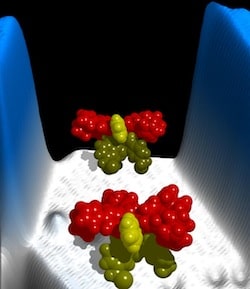
Electrons from a scanning tunneling microscope tip turn a five-arm rotor connected via a single ruthenium atom bearing to a tripod anchoring the molecular motor to a gold surface.
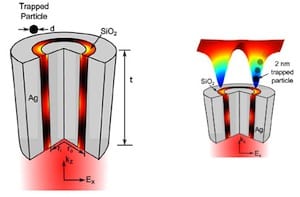
A theoretical proposal for optical tweezers and an experimental optical focusing device both depend upon electromagnetic waves trapped and guided along metal-insulator interfaces. Will these advances provide tools for manipulating molecular building blocks?
Apply by December 31 for one of 20 $100,000 grants offered by the Thiel Foundation to those under 20 to develop their entrepreneurial dreams.
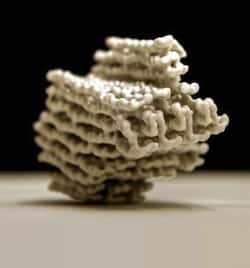
In two different sets of experiments a German research group has shown that scaffolded DNA origami can be used to assemble complex structures with precise sub-nanometer positional control, and that constant temperature reaction can greatly increase yields and decrease production times.
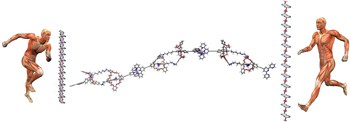
One research group working with rotaxanes and another group working with carbon nanotubes have provided two very different solutions to the problem of producing motion via artificial muscles at different scales from the nano to the macro.
A study of a biological molecular machine has shown that the machine functions most effectively when it uses chemical bonds just barely strong enough to survive the power stroke of the machine.

A set of 32-nucleotide single strand DNA bricks was designed so that each can interact independently with four other DNA bricks so that sets of hundreds of bricks can self-assemble into arbitrarily complex 25-nm 3D shapes, each comprising 1000 8-base pair volume elements.
New time-resolved, high-energy Xray studies of mechanochemical (ball milling) reactions take another step toward reducing the gap between current and future machine-phase chemistry.
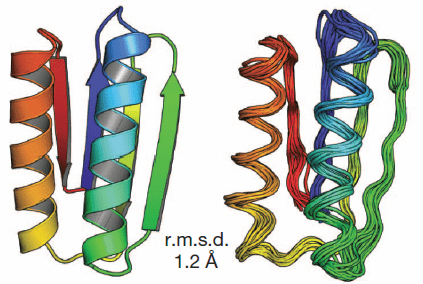
Five proteins were designed from scratch and found to fold into stable proteins as designed, proving the ability to provide ideal, robust building blocks for artificial protein structures.